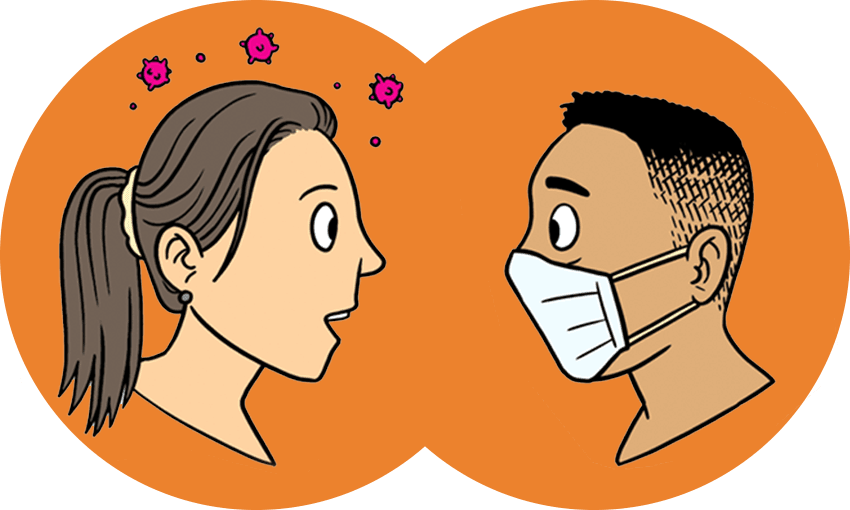Yes, Aotearoa is now in the orange traffic light setting. But rather than fighting to return to a normal that no longer exists, we should be adapting to a world that now has one more highly infectious airborne virus in it, argues Siouxsie Wiles.
Just in time for the Easter break, today New Zealand wakes in the orange setting of the Covid-19 Protection Framework. Yesterday’s media briefing was a bit of a mess, so if you’re confused about what the rules are you can find them all here.
Basically, there are no capacity limits any more, or spacing requirements. But there is still the requirement to wear a mask in some settings. The full list is available here, and includes on domestic flights and public transport as well as when visiting shops, museums, libraries, and any healthcare setting. Hairdressers and people who work in hospitality will also still need to wear a mask. Masks are encouraged at schools and tertiary education. I’ll come back to that later.
At the media stand-up yesterday, at least one of the journalists was struggling with why we don’t have to wear masks at nightclubs but do when going to the supermarket. “Where is the logic?” they cried.
Unfortunately, Covid response minister Chris Hipkins missed his chance to properly explain, so let me. Again. Because, you see, it’s not all about the people who are happy to go “pashing on a dance floor”. There is still Covid-19 circulating in the community in New Zealand.
That means many people are still trying to avoid catching the virus to protect themselves or their vulnerable friends and family members. You know, the ones with cancer, or who’ve had a transplant, or who are on immunosuppressive therapies.
Wouldn’t it be great if instead of being locked at home, those people and their household members could still go to the supermarket, or visit a museum, or take a flight to visit friends and family? They can do that if we all do our best to make those places safer for them. And face masks help with that.
So please, don’t think of a mask as a restriction. Think of it as a public health measure that is enabling others in your community to do things that you take for granted.
I’m disappointed mask wearing is not being kept mandatory for schools and tertiary education too. We should be keeping public health measures in place in settings like this. Some students and staff will be vulnerable members of our community, and, just like with supermarkets and libraries, they should be able to safely study and work. I think it’s a mistake to leave it to individual schools to decide what’s appropriate as it will mean some families feel they have no choice but to take their children out of school for their or their household members’ safety.
It will be interesting to see what impact moving to orange has on our case numbers. Will they start to rise again or remain at this level until winter or the next super-spreader event, or a new variant kicks off another wave? Given different parts of New Zealand are at different stages of their omicron outbreak, it does seem premature to move those regions still near their peak. We’ve seen plenty of places overseas drop public health measures only to have to do a swift u-turn.
All of this is also happening while we’re beginning to welcoming travellers from Australia. It’s worth considering where they are in their outbreak. During their first omicron wave in January, Australia peaked at over 100,000 confirmed Covid cases per day. They’ve just experienced a second, smaller omicron wave and are currently recording over 50,000 confirmed cases per day. It’ll be interesting to know how many times the virus will be brought into the country via that route.
The change to the orange setting seems to be about trying to bring some greater sense of normality, at least before the next wave hits us. But rather than fighting to return to a normal that no longer exists, we should be adapting to a world that now has one more highly infectious airborne virus in it. And it’s not a virus to be taken lightly. Covid-19 has likely killed millions of people and is able to cause serious short and long-term illness and disability.
We should be normalising the wearing of masks and bringing in guidance and standards for ventilation to make indoor venues safer for all of us, not just those who’ve recently had Covid-19 and feel invincible.
